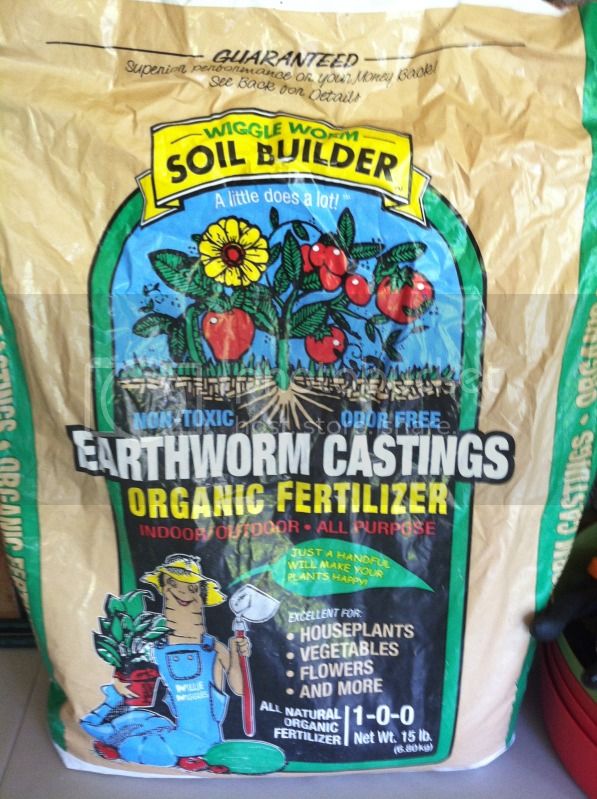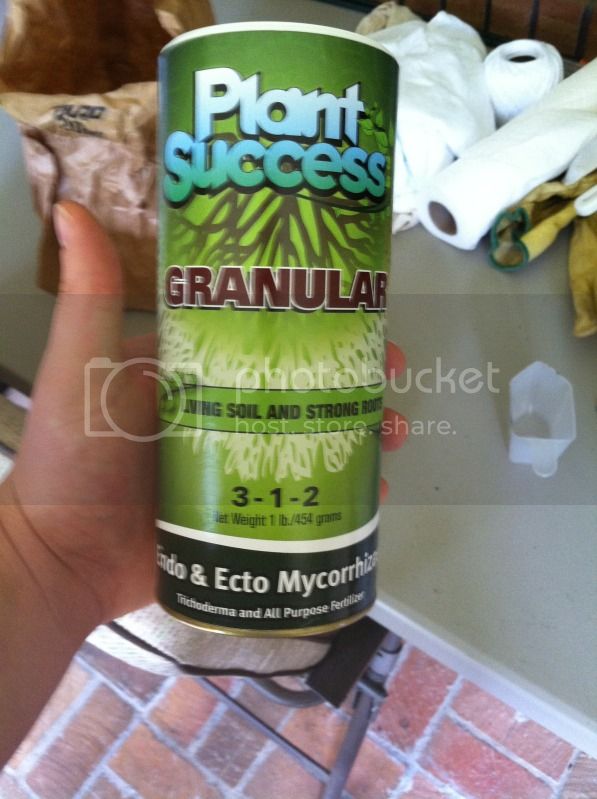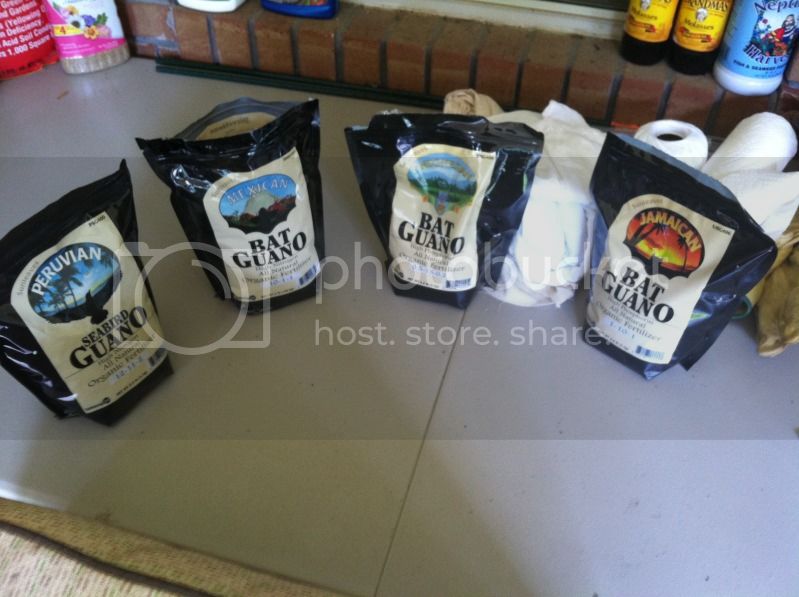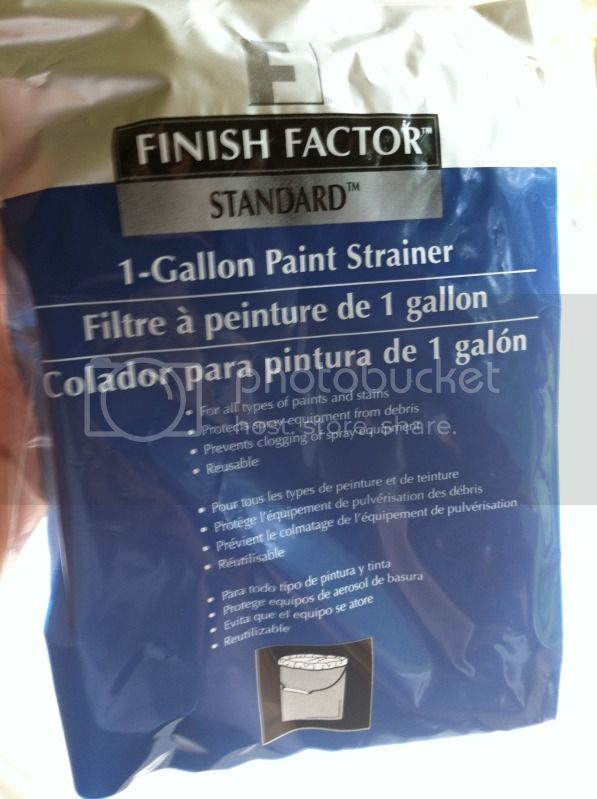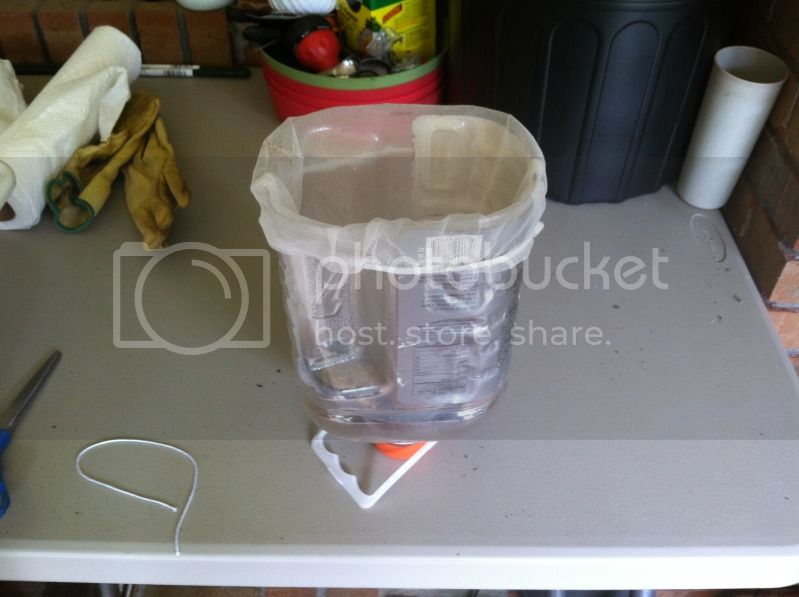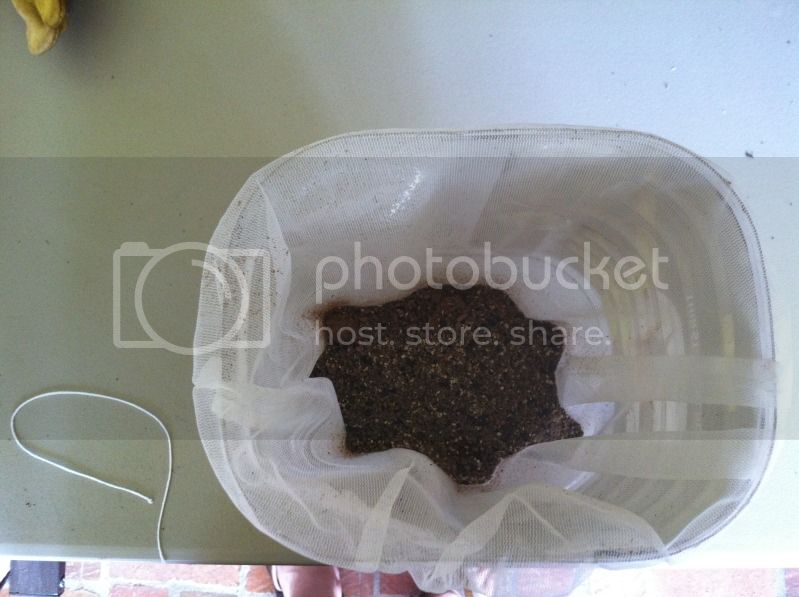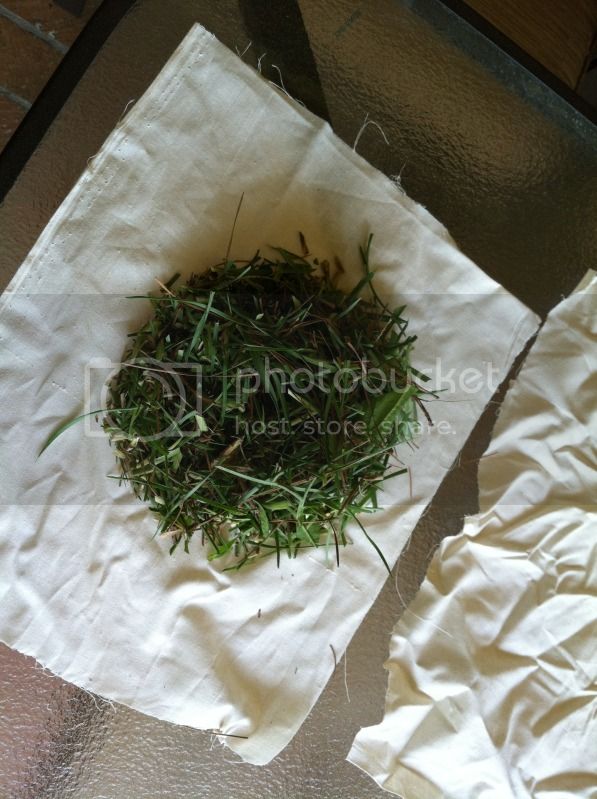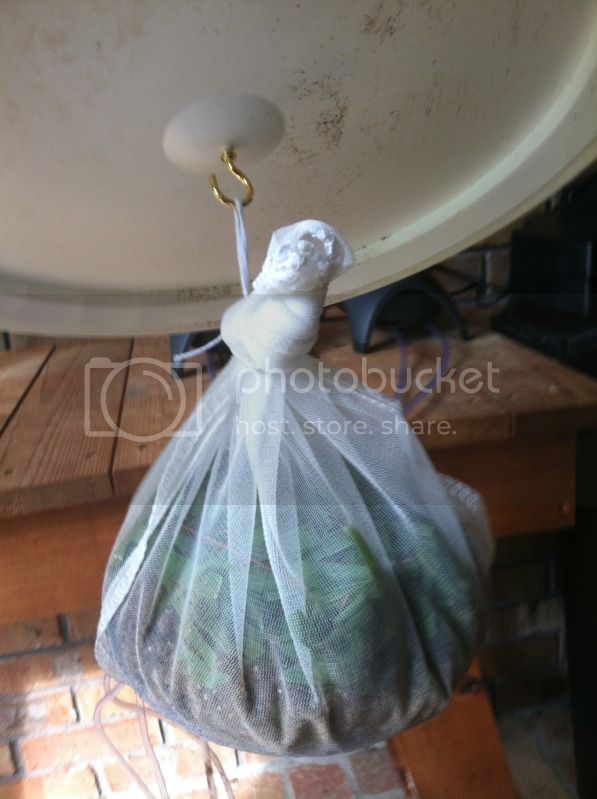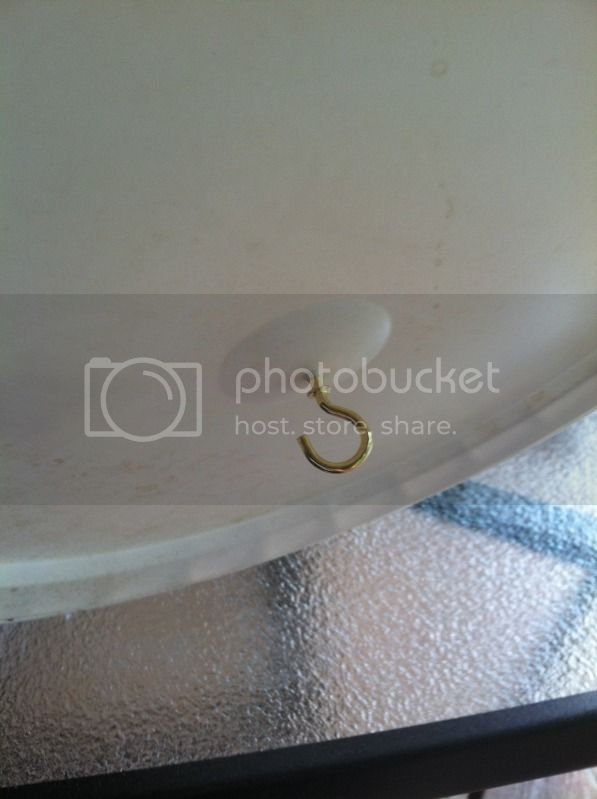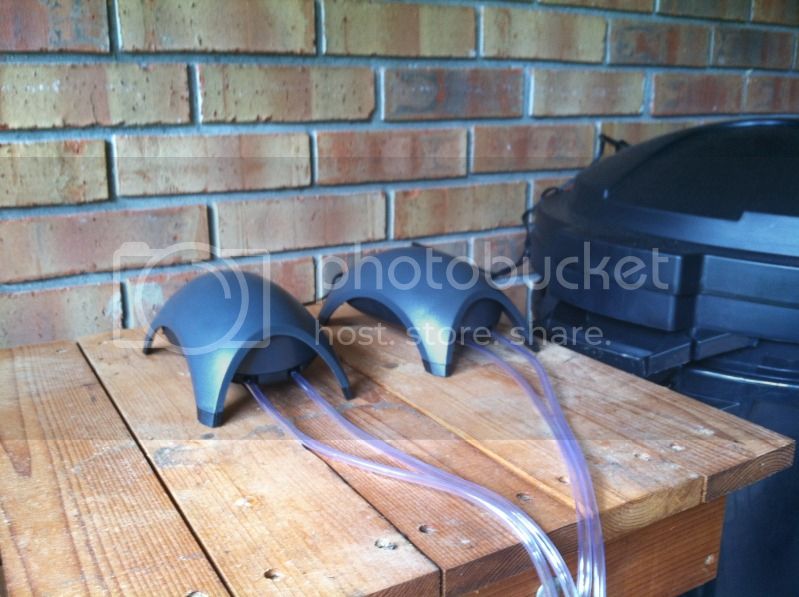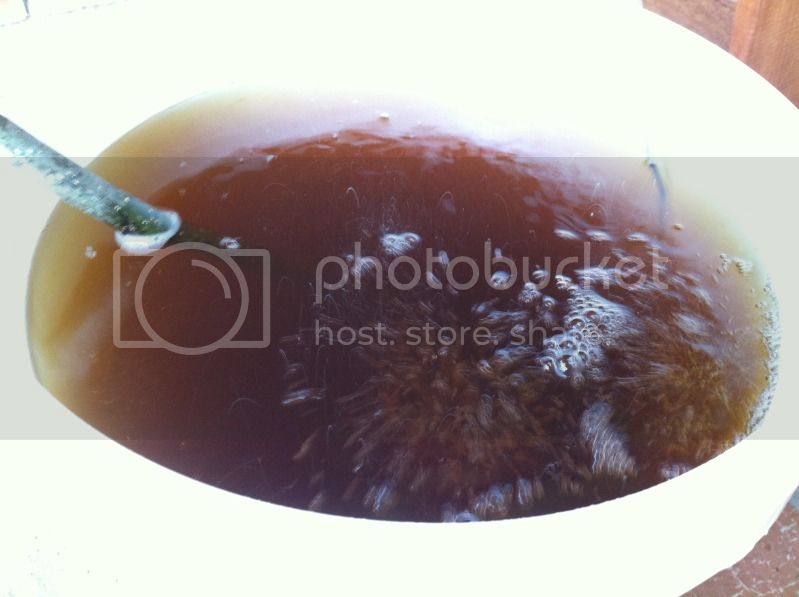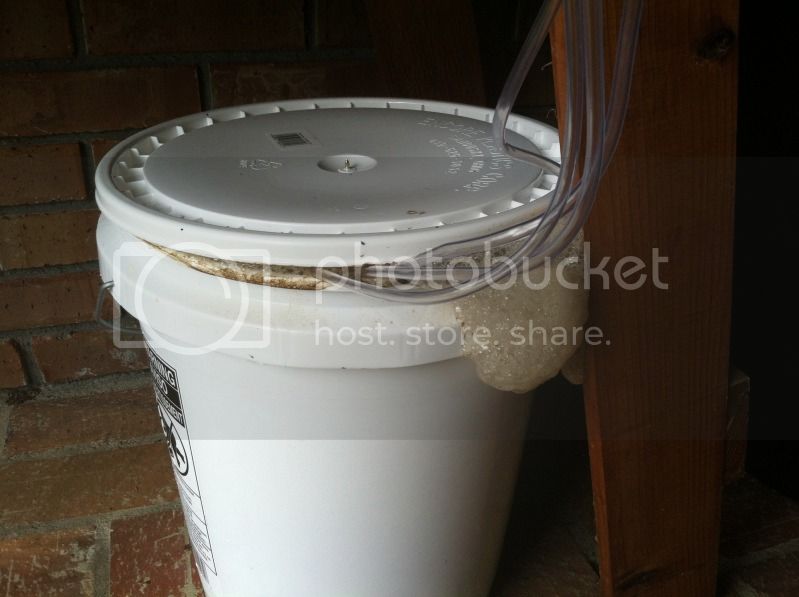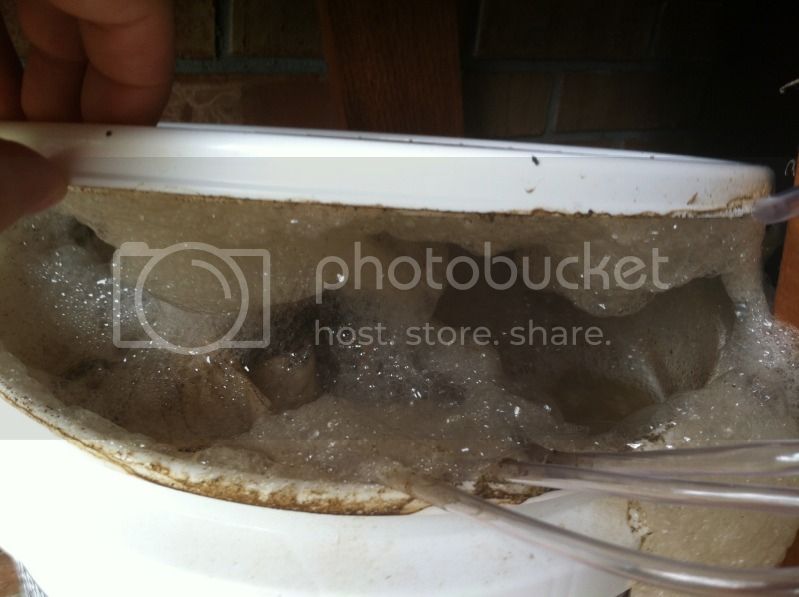4. To make your tea...de-chlorinated water must be used as the chlorine contained in the water will kill the beneficial microbes which you are trying to grow. City water users, I recommend filling up a bucket with water and allowing it to set out uncovered for at least 12 hours to "off-gas" the chlorine or you can take your newly bought aquarium pump with airstone and aerate the water for about an hour to remove the chlorine.
5. Next, you will want to take your "goodies" and place them in your fabric container as stated above. In this example, I will be using a painter's bag. Tip #1 - to make this easy on you, take a 1 gallon gatorade or milk carton and cut off the top leaving the bottom in tact. Take your bage or cloth and drape it into the container with the sides secured to the outside of the milk or gatorade carton.
This just allows you to utilize both your hands to add your "goodies" withou the possibility of tipping it over.
Recipes for teas vary tremendously, but here is my personal recipe: 1 - 2 cups organic worm castings, 4 TBSP of molasses, a handful of green grass clippings, 1 TBSP of Fish and Kelp Emulsion, 1/4 cup each various guanos (I use at least 3 types), and 1/2 cup mushroom compost.
6. Once you have your goodies placed within your bag, it's time to tie them up. For this task I bought some cheap yarn from wal-mart. I double over and overhand knot most of my bags and then tie them with the yarn (tell you why the yarn is needed later ; )
7. Next, you are about ready to fully assemble the brewer, but first, Tip #2: Go to HD or Lowes or any hardware store and buy some 3/4" brass self tapping hooks.
Take one of these hooks and screw it into the bottom part of your 5 gallon bucket lid like so:
This hook will now be the anchoring point where you suspend your bag of goodies into the water. This suspension allows more air bubbles to agitate and shake up the "goodies" allowing the beneficial microbes to release themselves from your "goodie bag" and disperse within the water.
8. With the hook placed,you can now take the loop of yarn previously tied around your "goodie bag" and hang it through the hook. Now the fun part - pour your molasses into the water and give it a good stir. Hook up you aquarium pump to 1 or 2 air stones (depending on your pump) and allow the length of aquarium pump tubing to be long enough to reach the bottom of the bucket.
Tip #3: Air stones naturally want to go to the surface of the water as the air is pumped through them - to correct this, go and buy a few washers. Take your aquarium tubing and run it through the washers before place on your air stones. The washer slides down the tubing freely and holds down your air stone in the bottom of the bucket.
After your airstones have been situated in the bottom of the bucket of water/molasses mixture, turn them on and let the water begin to churn. <<A footnote on aquarium pumps and airstones - the $5 base aquarium pump and $0.88 air stones from walmart are adequate and have made me great teas - however, more power and stones can be added to your setup to prevent Anaerobic (without air) pockets from forming which can lead to the growth of bad microbes and bacterium.>>
My current setup includes 2 pumps designed for 60 gallon aquariums with 4 individual airstones.
9. Take your bag of microbial goodies and attach it to the hook of the bucket lid. Place the lid on the bucket - naturally the lid will be vented from the aquarium tubing being draped in the bucket and this is what you want. Now you wait for magic to happen...
10. Your tea will now brew from anywhere in the ballpark of 12 - 48 hours depending on what microbial colonies you desire. 12 - 24 hours is usually a more fungal tea and 30 - 48 a more bacterial brew. Both brews are highly beneficial, however, peppers and vegetable plants generally utilize bacterial brews better.
What you will be wanting to see in your tea is a frothy head like that of a beer. This head indicates that those beneficial aerobic (air loving) microbes are multiplying exponentially---->one video stated complete microbial doubling per every 20 minutes of brew time!!!
An example of what you want to see:
Frothing out of the bucket = a great sign for your plants!
Nice n thick and almost soap suds like....
11. Once your tea is frothing and you are ready to noursih your babies...I mean plants

....you can do this several ways. You can put the tea into a watering can and water the roots of the plants or you can put the mixture into a sprayer for foliar feeding.
I practice both ways of nourishing my plants, however, when feeding to your foliage buy a wetting agent (ie; Coco-wet). This wetting agent acts as a surfactant and breaks up the surface tension found on your plants leaves. This allows the mixture to be more readily absorbed by the leaves instead of running off onto the ground. When applying to the foliage, make sure to spray the underside of the plants leaves as well as the stems, tops of leaves, blooms, pods, etc. The bottom of the leaf is where primary nutrient uptake occurs with foliar feeding, plus you want to spread those beneficial microbes everywhere you can.
Generally foliar feeding should be done in the early morning or at night when the stomata (nutrient uptake centers on the underside of the leaf) are maximuly expanded for full absorbtion. If done mid-day, you run the risk of causing sunburn due to droplets forming on the leaves, as well as decreased uptake as the stomata are narrowed to preserve plant moisture and water content.
12. Often times it is brought up how often to dose the plants and how often to foliar spray and how much should you dilute...yada yada yada. The answers to all the questions is....it depends. As long as you are brewing solid quality tea and are not replicating harmful microbes within the brew, then once a week dosing is not detrimental. Also, as long as you are not adding things to the tea that can potentially burn and damage your plants leaves and roots, then once a week can also be done. Dilution: I think that depends on the above statement as well as how far do you need the tea to stretch. I have seen recommendations to cut the tea at a 1:5 ratio. That means your 5 gallon batch can make you an upwards of 25 gallons of tea if needed

IMPO - in establishing the beneficial microbes within the soil and on the plants, I would dose (to the roots and through foliar feeding) once a week for 4 weeks and then once every 30 - 45 days. I also dose after heavy rain to boost the numbers of bacteria on the leaves and to prevent opportunistic leaf spot.
13. Another common question I see is how long can you store the tea - After roughly 4 hours without active aeration, the beneficial microbes begin to die off. Not only is this detrimental to your hard work, but allows the potential for bad anaerobic microbes to proliferate.
Hope you Guys enjoy and can use this to your benefit....
Aerated compost tea is a relatively new approach seen within gardening and therefore reputable studies and information can be hard to find. The following links provided will redirect you to various webpages illustrating some of the benefits of aerated compost tea as well as a
study carried out by the Minnesota department of Agriculture indicating detailed results as a use of AACT.
The Minnesota department of Agriculture
study provides some decent data regarding compost tea versus conventional methods of growing.
Information about compost tea provided by the EPA
Oregon State University
A study on plant disease suppresion carried out by Vern Grubinger of the University of Vermon Extension agency.
A National Geographic Green Living article